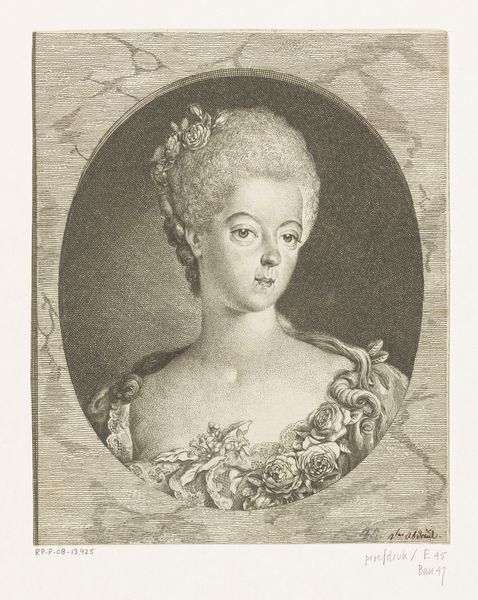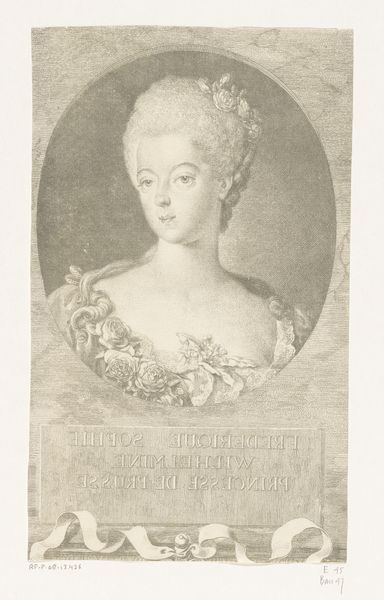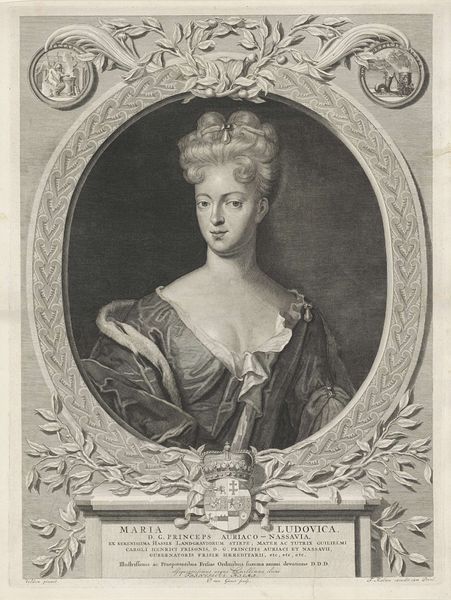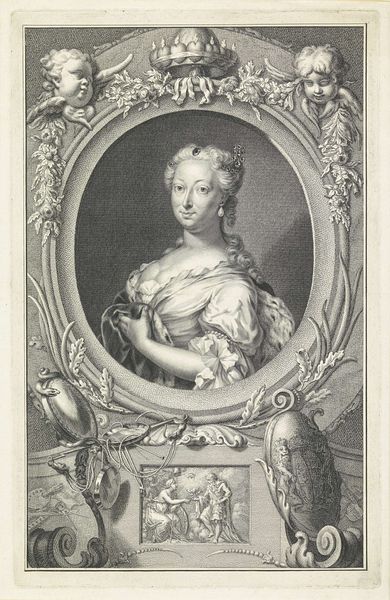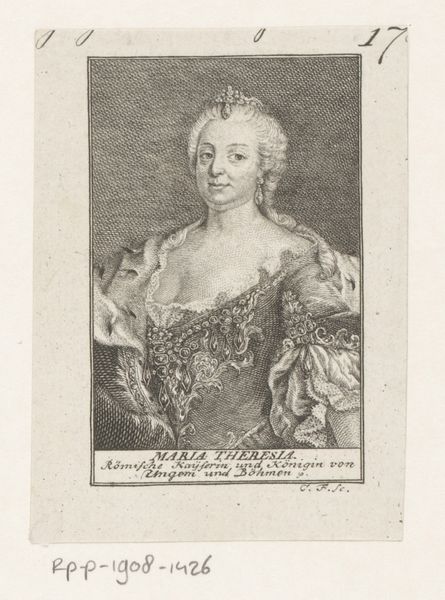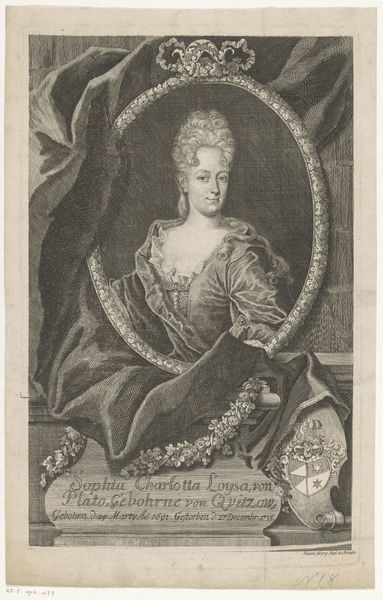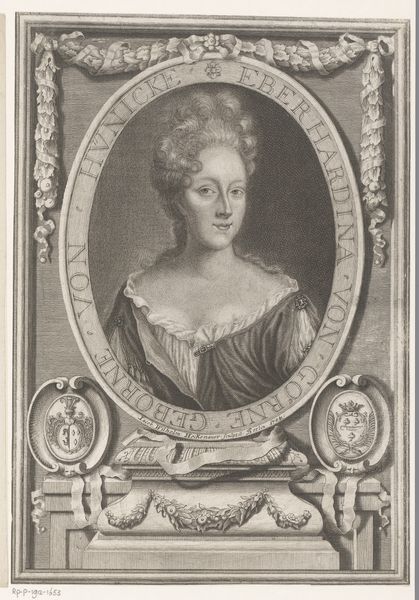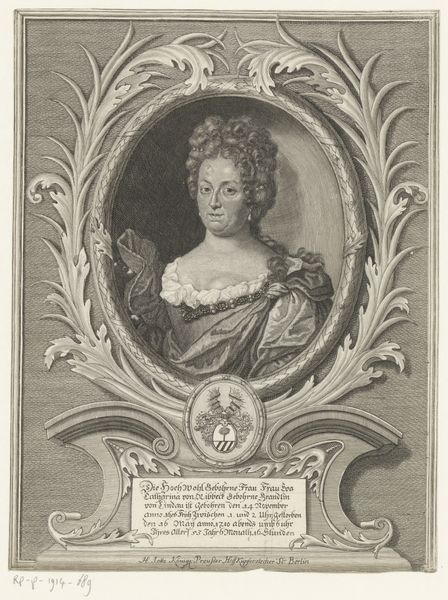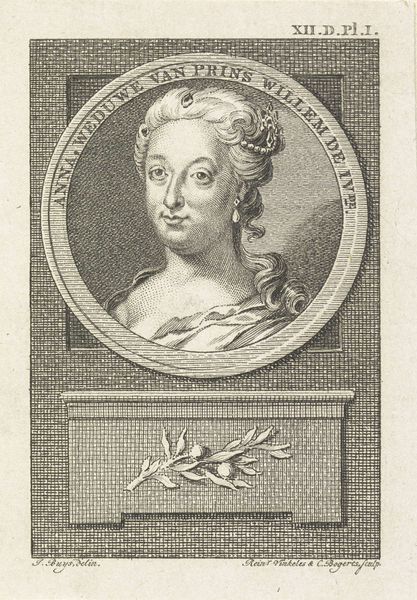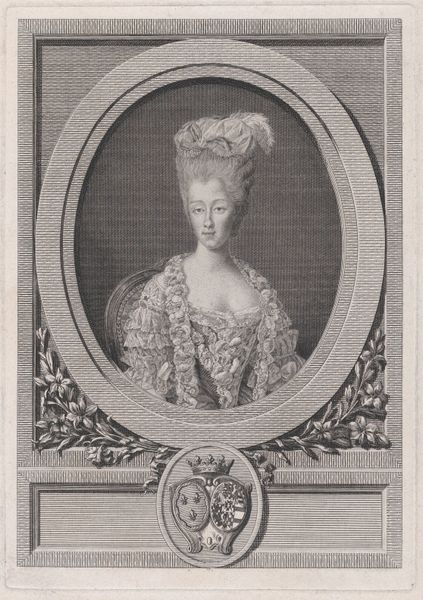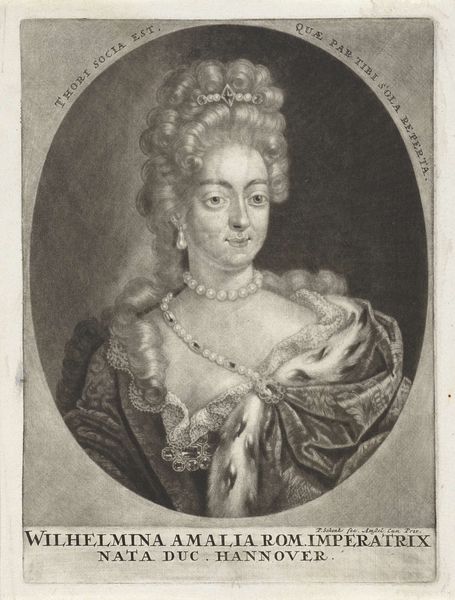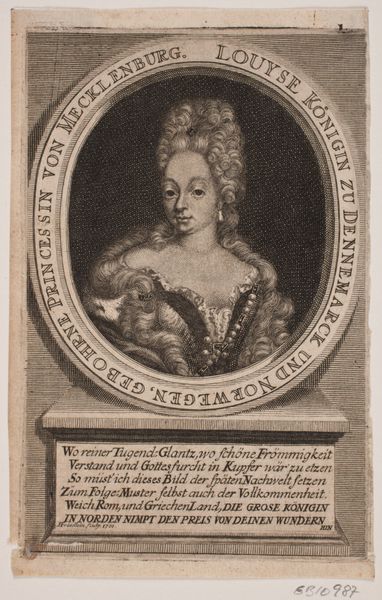
Dimensions: height 315 mm, width 222 mm
Copyright: Rijks Museum: Open Domain
Curator: Immediately striking! There’s a stillness and formality, but also something quite vulnerable in her gaze. Editor: Indeed. What we're looking at is "Portret van Wilhelmina van Pruisen," or "Portrait of Wilhelmina of Prussia," an engraving crafted around 1767 by Daniel Nikolaus Chodowiecki. It's part of the Rijksmuseum's collection. Curator: Right, the detail is incredible for an engraving. It's more than just a likeness; it suggests the complex intersection of power, gender, and societal expectations for someone in her position. Wilhelmina wasn't just a princess, she was a political figure in her own right, wasn't she? Editor: Absolutely. Her marriage and subsequent treatment really underscored the precarious position of women, even those of royal birth, in the political landscape of the late 18th century. We have to remember how engravings functioned in those days as vehicles of political discourse. Consider the dissemination of her image – who was meant to see it, and what message did they receive? Curator: The fact that it's an engraving also suggests a certain level of accessibility. Prints were more readily available to a broader public compared to, say, painted portraits, democratizing the image of power, even if slightly. Do you see how she is adorned with flowers? The symbolic language of flowers in portraits, especially roses in her hair and on her dress, can signal beauty and virtue. However, perhaps there is a contrasting subtext given the tensions within her marriage? Editor: Interesting observation. Contextually, images like these bolstered a dynasty’s power but simultaneously imposed constraints. The flower details become part of a performative femininity. One wonders, too, about the gaze—both hers and the viewer's—within the historical reception of portraiture, especially concerning gender. Her own perspective might very well differ substantially. Curator: And knowing how history has judged her, knowing about the pressures she faced and the choices available to her at the time, definitely shapes our viewing experience. It’s almost impossible not to see her as a figure caught between duty and desire, freedom and constraint. Editor: Absolutely, it adds layers. The formal artistic elements blend into the history of socio-political power structures of the era. Curator: This artwork certainly highlights how artistic choices in portraiture could reflect the socio-political position of the sitter, but also the politics of those commissioning it. Editor: Precisely, leaving us with multiple interpretive possibilities across time.
Comments
No comments
Be the first to comment and join the conversation on the ultimate creative platform.
